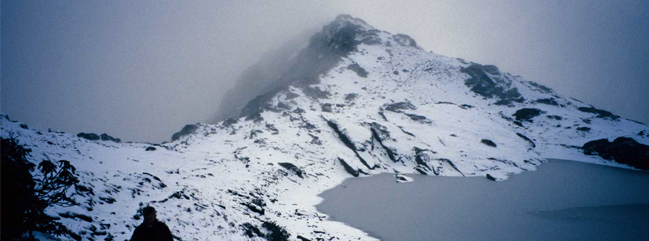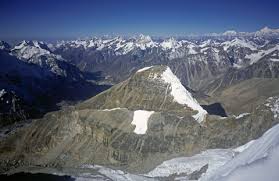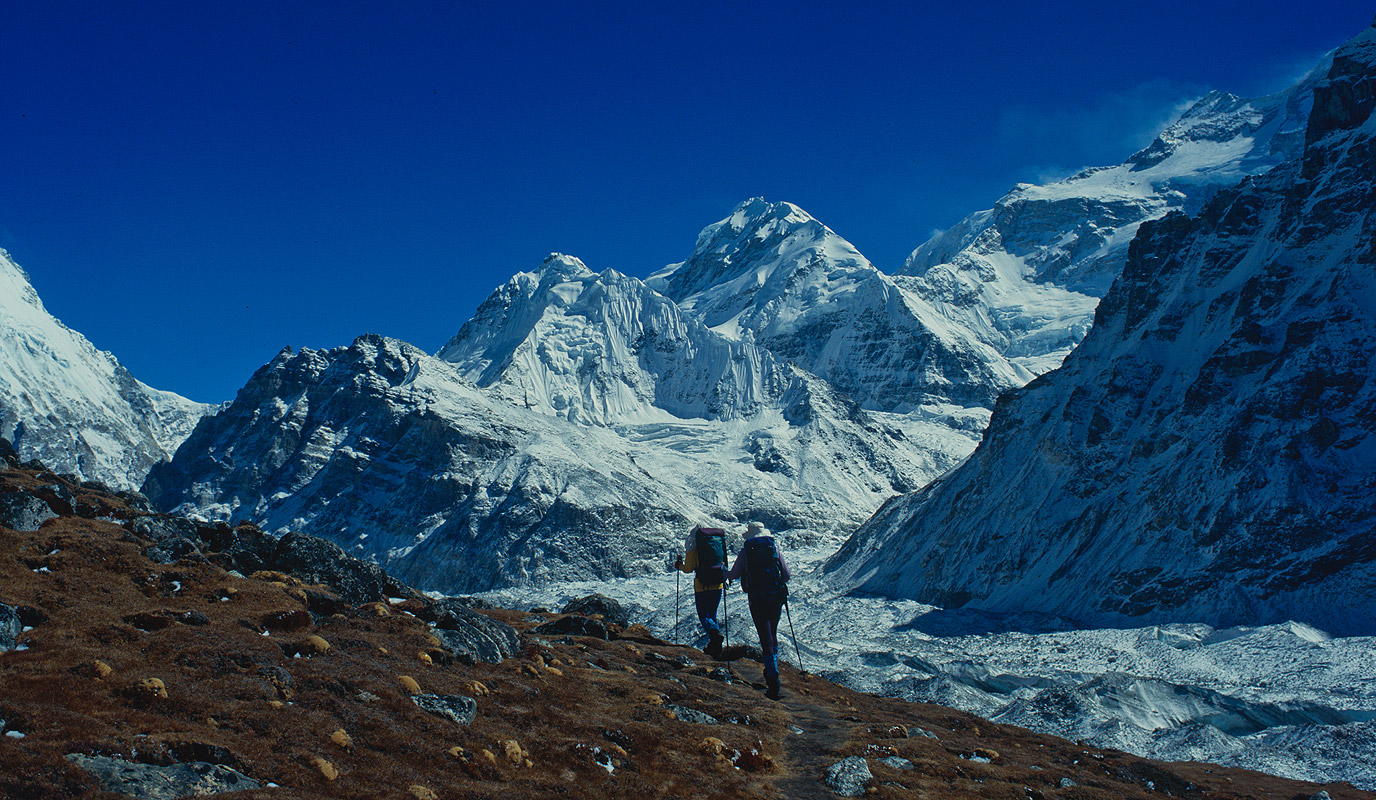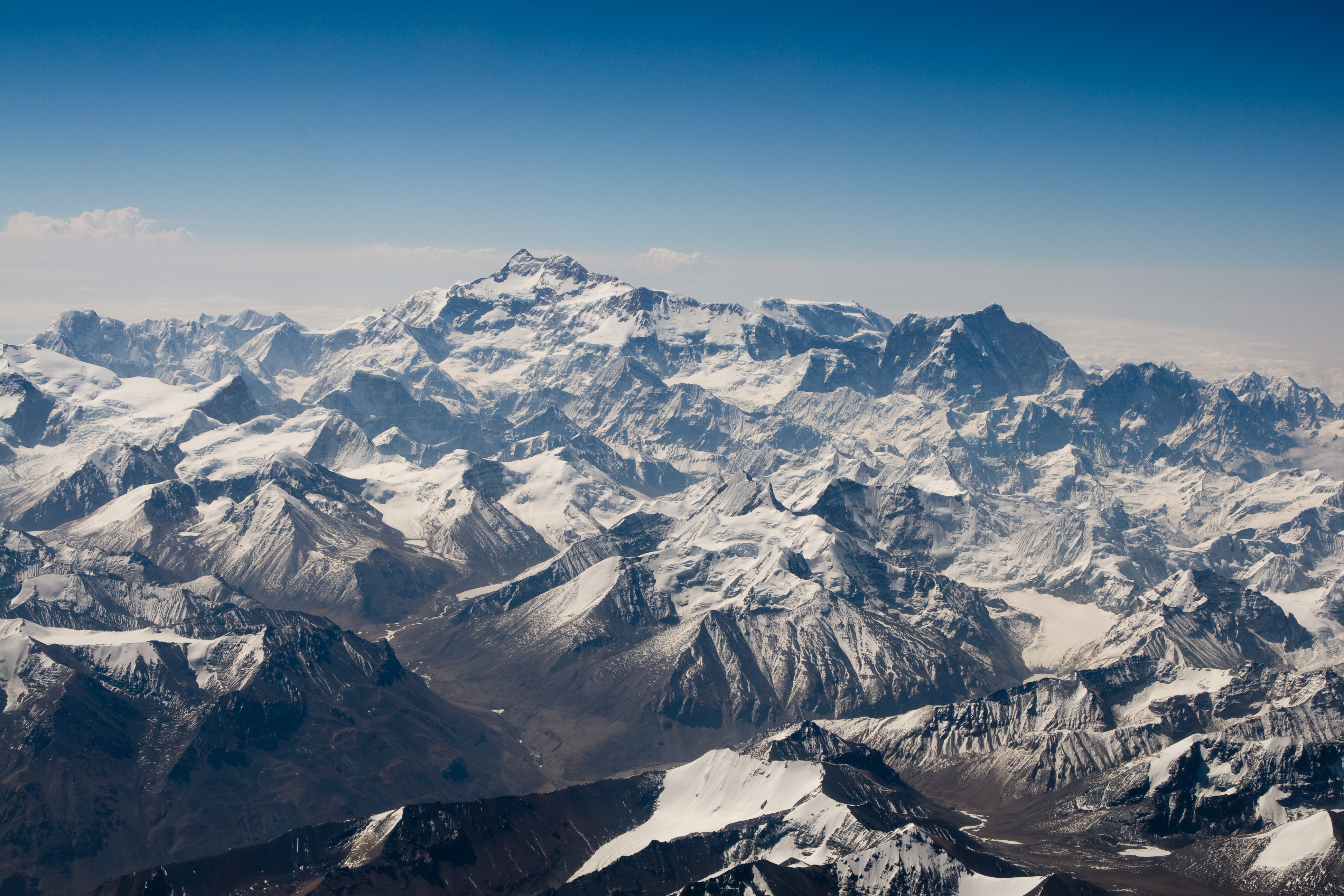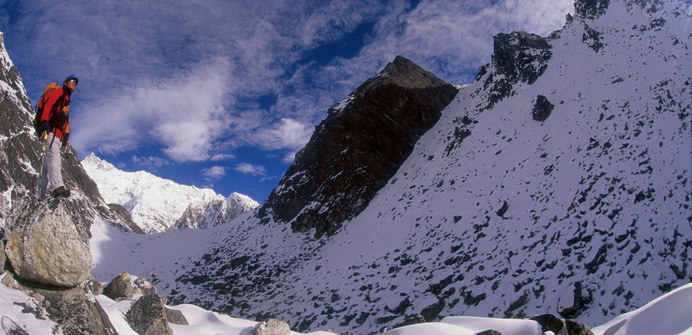Day 01- Arrival in Kathmandu airport (1345meters).
There you will be met by our Airport Representative and transferred to hotel by private tourist vehicle. Overnight at hotel.
Day 02- Pre-trip Meeting and Sightseeing around Kathmandu valley.
In the morning after breakfast at 9 AM, we host a Pre-Trip meeting at your hotel in Kathmandu and introduced your trek Leader/Guide mean time and it will provide an opportunity for individuals to ask questions about the your trek and to introduce you to other participants. This includes a final briefing and preparations for the trip.
PLEASE ADVISE US IF YOU WILL BE ARRIVING LATE AND ARE THEREFORE UNABLE TO ATTEND THE PRE-TRIP MEETING.
In THE PRE-TRIP MEETING All passengers MUST bring:
1. Passport.
2. Four copies of Passport size photos each.
3. Travel Insurance Policy.
4. A writing pen
5. Notepad.
After the Pre-Trip meeting and breakfast your sightseeing trip will start at 9.45 AM in the morning. We provide a private vehicle and professional tour guide. We visit Bodhnath Stupa, one of the biggest Buddhist shrines in the world, where we observe Buddhist monks in prayer in the monasteries surrounding the stupa. After Bodhnath Stupa we visit Pashupatinath, the most famous Hindu temple in the country, located on the banks of the holy Bagmati River. Here we see Hindu holy men (sadhus) meditating, pilgrims bathing and occasionally funeral pyres burning on the ghats. We also visit Bhaktapur Durbar Square, which is a collection of pagoda and shikhara – style temples grouped around a fifty-five-window palace of brick and wood. The attraction of the Bhaktapur Durbar Square is The Lion gate, The Golden gate, The Palace of fifty five windows, Art Galleries, The Statue of King Bhupatindra Malla.
The rest of our time in Kathmandu is free for further exploration and some last-minute shopping in Thamel area near by your hotel. Later, we are supplied with our Trek Pack and departure information for tomorrow. Overnight at hotel.
Day 03- Fly from Kathmandu to Taplejung (2320meters) trek to Lali Kharka (2276meters) 3 hours.
Half hour flight to Taplejung at Suketar Airport. The porters and crew will be waiting for our arrival. After landing we take an early lunch, while the crew arranges our gear. In the afternoon we start with an easy 2 to 3 hours walk along the ridge line to Lali Kharka, a grazing area. Overnight at tented camp.
Day 05- Fhurumbu
Taplejung to Fhurumbu
Day 06- Chirwa
Fhurumbu to Chirwa
Day 07- Sekhatum
Chirwa to Sekhatum
Day 08- Amjilesa
Sekhatum to Amjilesa
Day 09- Gyabla
Amjilesa to Gyabla
Day 10- Ghunsa
Gyabla to Ghunsa
Day 11- Ghunsa
Ghunsa ( Rest Day )
Day 12- Khambachen
Ghunsa to Khambachen
Day 13- Trek to Lhonak (4790meters) 6 hours.
A gradual climb through rocky fields gets you to Ramtang at elevation of 4240 meters then crossing northwest of the Kanchenjunga Glacier you reach Lhonak. Lohnak is on a sandy plain near a dry lakebed. You will camp between the boulders here to stay out of the wind. There are beautiful mountain vistas all around. Water is very scarce in Lhonak and you will need to use only as much as absolutely necessary. Overnight at tented camp.
Day 14- Lhonak
Lhonak ( Rest Day )
Day 15- High Camp
High Camp
Day 16- High Camp
Climbing Period
Day 17- Lhonak
High Camp – Lhonak
Day 18- Gunsha
More descents thru magnificent sections of forest as long as we make Amjilosa tomorrow. From Ghunsa an hour down we pass through Phole, a village in two parts. The upper section houses Tibetan refugees who are well established, the second is the winter village of Ghunsa. Further down is Yangswa, a great and warm camp. Overnight at tented camp.
Day 19- Gyapla
Gunsha – Gyapla
Day 20- Sekathum
Down, down and down! After a short climb we begin the steep descent that will take most of the day. We reach the joining of the Tamur and Ghunsa Kholas. Overnight at tented camp.
Day 21- Chiruwa
We cross the Simbu Khola, which originates from Kanchenjunga’s south base camp, the Khola that we followed up from Torontan. It is pleasantly warm at these low altitudes and cardamom grows freely in the moist shaded forest. Crossing numerous small tributary streams we reach Chhirwa, a village set among large boulders. We camp in a field out of the village. This is an easier day. Overnight at tented camp.
Day 22- Phumpay Dada
Chiruwa – Phumpay Dada
Day 23- Suketar Airport
Traversing in an out of minor valleys, we pass thru a succession of picturesque villages on our way to Suketar, reaching around late afternoon. Overnight at tented camp.
Day 24- Biratnagar
Taplejung – Biratnagar
Day 25- Kathmandu
Enjoying your last glimpse of the mountains you have recently visited one last time on the 35 minute Scenic flight back to Kathmandu. Overnight at hotel.
Day 26- Leisure day in Kathmandu.
It’s also spare day in Kathmandu, if you are interested in continuing onto Chitwan Jungle Safari, River Rafting Adventure, Kathmandu Shopping Tour or Scenic Everest Flight.
Day 27- Transfer for your final flight departure.
The trip ends, our Airport Representative will drop you to the Kathmandu International Airport for your flight departure from Nepal.
NOTE: The above information is a guide and standard template of what we provide. The trek can be customized at your request to accommodate your specific requirements.
NOTE: On adventure trips of this type, weather, local politics, transport or a multitude of other factors beyond our control can result in a change of itinerary. It is, however, very unlikely that the itinerary would be substantially altered; if alterations are necessary the leader will decide what is the best alternative, taking into consideration the best interests of the whole group. Where a change does occur, we do everything we can to minimize its effect, but we cannot be responsible for the results of changes or delays.
Q. How fit do I have to be and is trip for me?
A. Climbing Peak provides the most adventurous experience with spectacular scenery through remote glaciated valleys and passes. This trip requires you to have an above normal level of fitness which will assist with climbing Peak. Any person suffering from a pre-existing medical condition or diseases must seek medical advice before considering this trek. Whilst on the trek, it is common to experience some discomfort before being fully acclimatized.
To prepare for a strenuous trek you should begin training at least two to three months before your departure. As a guideline, an hour of aerobic exercise three to four times per week would be considered a minimum requirement. The best preparation is bushwalking involving relatively steep ascents and descents. If you can manage a couple of valley floor to ridgeline ascents per comfortable and able to enjoy the trek to the fullest. They are physically strong, sharp-witted and have an incredibly positive attitude towards a life that we would consider extremely tough. There is something about a trek in the Himalaya that draws you back time and time again. For keen walkers it is a paradise and even avowed non-walkers find that one foot just seems to follow the other, drawn by the appeal of what lies beyond.
Q. Will somebody come to pick me up at the Airport upon my arrival?
A. Yes, our Airport Representative will be there to greet you outside of Terminal Hall, he/she will be displaying an KIWI SHERPA TREK & EXPEDITION sign with your name on it. Upon arrival, you will be transferred to your hotel.
Q. What sort of accommodation can I expect in Kathmandu and in trekking?
A. We use standard rooms from three/four star hotels in Kathmandu with breakfast included. Along the trekking routes teahouses/Lodges generally provide basic clean facilities with a mattress and a quilt or blanket. We can also offer you sleeping bags if needed (which need to return after the trip) but it is good idea to always have your own sleeping equipment. We usually provide single and double rooms as well as the occasional dormitory. The dining room is downstairs around a fire. All food will be cooked to order in the little kitchen. You should not enter the kitchen unless asked to do so.
Toilet Facilities – On trek, common toilet facilities are available at Tea Houses.
Q. What sort of food can I expect in trekking?
A. Most teahouses (lodges) cook a delicious range of mostly vegetarian fare. Pasta, tuna bakes, noodles, potatoes, eggs, dhal bhat, bread, soups, fresh vegetables (variety depends on the season) and even some desserts like apple pies, pancakes, and some interesting attempts at custard. You will find a lot of garlic on the menu because it assists with acclimatization – eat some every day. In many larger villages you may find some meat on the menu. You can always get hot chocolate, tea, and hot lemon drinks, as well as soft drinks, and treats like chocolate and crisps.
During the Camping, our export camping cook can prepare specially requested food if you advise. In any case, you will have similar fare to teahouses.
Each day dinner and breakfast are used to take in the same lodge you spend the night. Lunch will be taken on the way to destination.
Q. What sort of transportation you use?
A. Kiwi Adventures Treks & Expedition is all about providing you with local insights as well as adventure, with that in mind, where we think you will get more out of your holiday by using different means of transport that is what we do. Using a variety of private transport is an integral part of our Himalaya tours and enhances the experience!
We use private tourist vehicles for sightseeing, city tours and pickups. Depending on the group size we use cars, minibus, van, land cruiser. These small light vehicles are more manoeuvrable and flexible enabling us to take you through the Narrow roads of Nepal. All the vehicles are usually air-conditioned unless we are travelling in cooler areas.
Q. What is the best season for this trip?
A. The best time for this trip is October to November and March to May.
Q. What is the weather & temperature like in trekking?
A. Weather in the mountains is notoriously difficult to predict. At night it is generally cooler with the days being warmer, and in winter (January and February) it will be bit colder but the days can be quite beautiful and warm if the sun is out. There will be snow any time of year. It is also important to make sure that you can stay warm and dry in just about any conditions. Expect the unexpected! The temperature could be as high as 20 deg C to -15 deg C low.
Q. Can I charge my digital camera or other batteries on my trip?
A. These facilities will be available in most of the places in your hotel reception by paying some service charges. Remember to bring your adapters!
Q. Is there any communication while we are on trekking?
A. There are telephones in some villages along the trekking routes from which you can make international calls.
Q. Can I use credit cards in the places visit in trekking?
A. In most cities yes, to some extent, however once you leave those cities behind you will only need cash.
Q. How much additional money do I need per day?
A. In Kathmandu, you can allocate US$ 10 – 25 for a lunch / dinner. It’s all depends on your spending habits. US$10 to 20 US$ a day will be enough to buy bottles of water, chocolates and few drinks in trekking.
Q. Do I need to tip my guide and porters? How much would that be?
A. This is a difficult thing to judge. We have seen everything from 20USD to 1000 USD per person for guides and porters. Tipping is not required, but a small way to show your guides and local porters thanks for their help. The level of the tip should reflect the level of personal involvement with your guide.
Q. Is the water OK to drink? Do I need to bring purifying tablets/filter?
A. In most places bottled water is readily available. But it is important for you to drink normal water, so bring purifying tablets with you. During camping we provide boiled water to drink.
Q. Are the Kiwi Adventures Treks & Expedition staff insured?
A. Our company insures all our trekking staff, including guide, cook, Sherpa and porters.
Q. What essential documents do I need to bring with me on tour?
A. *Valid Passport – must be valid for up to 6 months after you return from your tour, keep a separate photocopy.
*Travel insurance, keep a separate photocopy
*Cash and Traveller’s Cheques, keep numbers and proof of purchase separate
*Flight tickets
*Emergency contact numbers for T/C’s, banks, insurance, family contacts.
Q. Can I add extra days to my trekking trip?
A. A trekking holiday should never be about making it to the final point quickly. Along your trek we can add days at your request with additional costs to cover guides, porters, accommodation and food.
Q. Do you use yaks/porters on the trek or do we carry all of our own gear?
A. Whilst on the trek, our porter will take care of your luggage. All you need to carry is your small day bag for your personal belongings like camera, water bottle, sun cream etc only.
Q. What opportunities will I have for shower along the trek?
A. In major places, we arrange guesthouse with hot shower. And in rest of the places, hotel water in bucket will be provided for shower; it would cost you extra about USD 5-8 per shower.
Cost Includes
• Airport / Hotel / Airport pick up & drop by private car / van / bus.
• Standard twin sharing accommodation in three/four star hotel in Kathmandu breakfast included. (6 nights)
• Guided city tour in Kathmandu by private car / van / bus.
• Full board meal during the trek and camping at base camp, prepared by our cook with hot Tea & coffee.
• All base camp and Advance base camp camping gears (We will provide fully water proof dining tents, kitchen gears, dining table, chairs, toilet tents, shower tent at the base camp and advance base camp)
• High quality tents for all camps.
• Insurance for all Nepali staffs and porters including helicopter rescue provision.
• Boiled and purify drinking water for the trek and at base camp.
• Expedition permits
• Liaison officer and his round trip flight, insurance, wages, expedition equipments etc.
• High altitude climbing food, fuel, Gas above base camp (you are also advised to bring some high altitude food yourselves)
• Guide, cook, porters, helpers up to base camp
• Climbing Sherpas (1 member = 1 Sherpa Ratio on climbing day)
• A well stocked first aid and medical kit sufficient to counter any possible mountaineering ailments, from headache to serious injury.
• Oxygen equipment for medical use only.
• A portable hyperbaric chamber (Gamow bag)
• Emergency communications on the mountain and satellite communications link for helicopter evacuation.
• Oxygen 7 bottles per team climber and 4 bottles per Sherpa.
• Mask regulator
• Sightseeing/Monument entrance fees in Kathmandu.
• Welcome dinner for members in Kathmandu.
• Power supply at Base Camp for charging electronics (solar and generator backup)
• Flight cost from Kathmandu – Lukla – Kathmandu including airport departure tax at both airport.
• All our government taxes and vat.
• Farewell dinner party in Kathmandu.
Cost Excludes
• Lunch and dinner whilst in Kathmandu.
• Travel Insurance which cover emergency Rescue and Evacuation. (K2 Summit strongly recommends that you purchase a Global Rescue membership to protect yourself. We are an authorized agent of Global Rescue. Read about our emergency helicopter RESCUE & SECURITY EVACUATION Policy)
• International airfare and airport departure tax.
• Nepal entry visa fee (Tourist Visa with Multiple Entry for 90 days can be obtained by paying US $ 100 in Kathmandu airport up on your arrival. You will also require 2 passport size photos You can easily extend the visa if require.)
• Items of a personal nature such as alcoholic drinks, cold drinks, laundry.
• Personal trekking and Climbing Equipment.
• Any others expenses which are not mentioned on Price Includes section.
• Garbage Deposit USD 4000.00 (sharing from climbing group). It is refundable; however, it will not be refundable if the climbers fail to take back their garbage to Namche Bazar and Kathmandu.
• Excess baggage charges.
• Sherpa tip pool (See below)
• Internet and sat phone.
• Costs incurred as a result of delays or events beyond the control of Ace the Himalaya.
